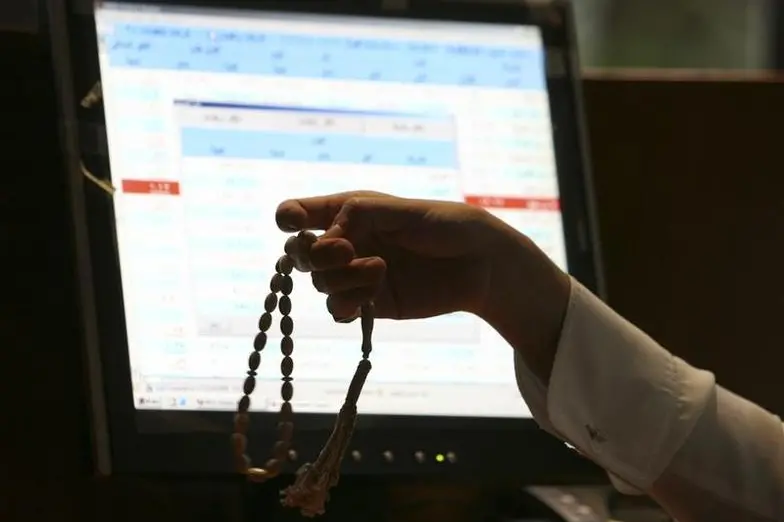PHOTO
Sunday, Jan 22, 2017
Dubai: The share of sukuk issuance in core markets such as the Gulf Cooperation Council (GCC) region, Malaysia, Indonesia, Turkey and Pakistan are expected to keep up their market share in 2017 in the total debt capital market issuance despite a significant increase in conventional bond issuances last year by Saudi Arabia, Abu Dhabi and Qatar, according to analysts.
“Sukuk issuance in core markets rose by 26 per cent in 2016 and broadly maintained its share of capital markets funding despite large conventional bond issues. We expect sukuk issuance to grow at a similar rate in 2017 and believe market share will rise as more sovereigns issue sukuk alongside conventional bonds,” said Bashar Al Natoor, Global Head of Islamic Finance
New sukuk issuance with a maturity over 18 months from the core markets of the Gulf Cooperation Council (GCC) region, Malaysia, Indonesia, Turkey and Pakistan rose to $40 billion (Dh147 billion) in 2016 from about $32 billion a year earlier. This represented 28.5 per cent of total bond and sukuk issuance in these markets in 2016, down marginally from 29 per cent in 2015.
Global sukuk issuance increased marginally by 2.2 per cent in 2016 to reach $77.1 billion as compared to $75.4 billion during 2015. This increase was much smaller than the 5.5 per cent growth seen in 2015. The deceleration in growth was primarily due to the fall in sukuk issuance by Malaysia ($28.2 billion in 2016 as compared to $4.4 billion in 2015), in addition to the GCC countries that recorded a decline of $2.2 billion in 2016.
“The sukuk market did not play a countercyclical role in core Islamic finance markets in 2016, and we forecast a stabilisation of total issuance in 2017 at around $60 billion-$65 billion. We believe the complexity of sukuk issuance will continue to weigh on issuance volumes, unless counterbalanced by tangible results on standardisation or the establishment of large issuance programs,” said S&P Global Ratings’ Global Head of Islamic Finance, Mohamed Damak.
Surge
Sukuk issuance for the Mena region declined for the third consecutive year by 25 per cent in 2016, slightly lower than the 27 per cent decline during 2015. On the other hand, bond issuance jumped from $42 billion in 2015 to $75.8 billion during 2016, a surge of more than 80 per cent.
Analysts say the share of sukuk in total debt issuances from the core sukuk markets would have been higher last year but for the return of Saudi Arabia, Abu Dhabi and Qatar to the sovereign bond market with combined issuance of $31.5 billion.
Despite such huge surge in conventional issuances seven of 10 key markets did issue sovereign sukuk in 2016 and other sovereigns in the GCC region have indicated they could issue sukuk, or a mix, in the future, reinforcing the view that the market share of sukuk will gradually rise.
The decision on whether sovereigns issue bonds or sukuk is driven such as the target investor and funding base, whether there is an existing sukuk structure and Islamic finance strategy, and the needs and size of the Islamic finance industry, because Islamic banks cannot invest in traditional bonds. Outside core markets, issuance prospects are limited due to a lack of standardisation, which makes structuring sukuk a more complex and time-consuming process than a traditional bond.
Standardised structure
Malaysian companies continue to be the most active corporate issuers. Several other key markets have introduced or updated sukuk laws in the past few years, including Saudi Arabia, Oman and Kuwait, which should gradually boost issuance by creating a standardised structure and improving transparency.
The recent sovereign bond issues from the GCC region should also help create a capital market pricing benchmark and lower bank liquidity could reduce the pricing gap between capital market funding and the bank loans on which GCC corporates have traditionally relied. The biggest remaining roadblocks to corporate issuance are the development of debt-management expertise and a change in the corporate culture to increase financial and management transparency.
“The outlook for sukuk issuance in 2017 remains positive as GCC economies are expected to return to issuing sukuks to fund their deficits and tap the increasing demand Islamic investors in the region. Moreover, with stabilising oil prices and austerity measures in place, GCC governments will have the time to standardise policies for Islamic instruments and tap the unfulfilled global demand,” Faisal Hasan, Head — Investment Research at Kamco.
Analysts say GCC corporates that tap capital markets are more likely to issue sukuk or a mixture of both, rather than only bonds to attract a wider local and regional investor base. In addition, some corporates are limited to only Sharia-compliant borrowing by their own rules or by their desire to be included in Islamic investment funds and indexes. As a result, corporate capital markets activity is essential for sukuk to grow significantly in terms of proportion of total issuance.
By Babu Das Augustine Banking Editor
Gulf News 2017. All rights reserved.












